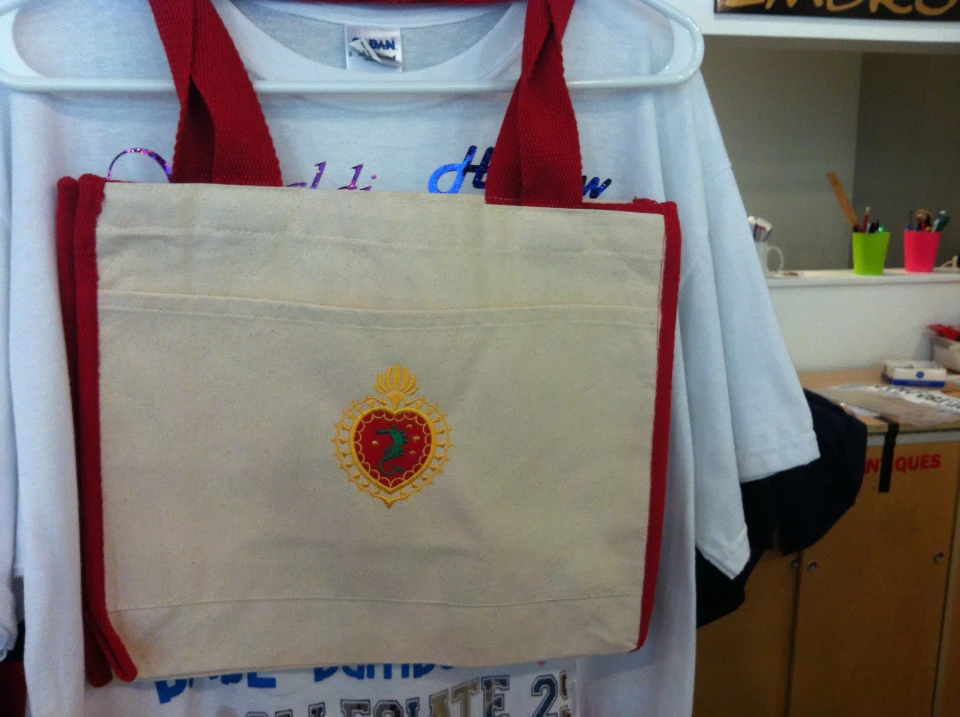The Art of Personalized Needlework: Opening the Tricks to Creating One-of-a-kind and Unforgettable Styles
Embroidery, a craft steeped in tradition and virtuosity, holds within its detailed stitches the power to change fabric into a canvas of distinct expression. The tricks to creating custom-made needlework designs that mesmerize the eye and leave an enduring perception depend on a delicate balance of technique, creativity, and interest to detail. As we delve right into the world of custom embroidery, we reveal the nuanced interplay in between thread option, stitch intricacy, and design customization that raises a mere garment to a masterpiece. Join us on a trip with the art of personalized embroidery as we untangle the enigmas behind crafting genuinely memorable and unique creations.
Selecting the Right Embroidery Threads
When picking needlework strings, what crucial elements should you consider to make sure the most effective outcomes for your personalized designs? The option of embroidery string is critical in establishing the last end result of your embroidered layout. One of the primary considerations is the material of the string. Different products such as cotton, polyester, rayon, and silk supply varying levels of sheen, toughness, and appearance. It is necessary to choose a thread product that complements the textile you are stitching on and lines up with the desired look of the style.
Thicker strings can include dimension and structure to your design, while finer threads are optimal for elaborate details and tiny text. In addition, considering the shade fastness and washability of the thread is essential to guarantee that your custom-made styles keep their high quality and vibrancy over time.
Checking Out Different Stitch Strategies
To look into the world of 'Checking out Various Stitch Methods', one need to grasp the complexities and subtleties that each sewing technique offers the art of needlework. Various stitch strategies not just add visual rate of interest however additionally add to the general structure and dimension of the style. One popular stitch method is the satin stitch, which entails closely stuffed parallel stitches to create a smooth and glossy surface, perfect for loading in shapes and producing strong lays out.
On the various other hand, the backstitch is a flexible technique commonly utilized for laying out and including great information. It includes sewing in reverse to develop a strong line of embroidery. Furthermore, the French knot stitch adds a responsive aspect to layouts, perfect for producing textured accents like flower centers or attractive touches.
Checking out different stitch techniques enables embroiderers to have fun with light, shadow, and depth within their designs, elevating the aesthetic appeal and imaginative quality of their needlework tasks. By grasping numerous sewing methods, one can open limitless possibilities for producing special and Look At This remarkable custom-made embroidery pieces.
Incorporating Personalized Style Components
Having checked out the ins and outs of various stitch strategies such as the satin stitch, backstitch, and French knot, the focus now shifts in the direction of including individualized style aspects in personalized embroidery jobs. Customized style aspects play a critical role in making embroidery tasks genuinely special and memorable. One means to include personalization is by including initials, names, or substantial days to the layout. This not only adds a tailored touch yet also improves the sentimental worth of the embroidery item.
Another method to integrate personalized design elements is by consisting of symbols or themes that hold unique definition to the recipient or reflect their interests and personality. For instance, integrating a preferred blossom, animal, or hobby-related sign can make the needlework design more meaningful and personalized. Furthermore, picking colors that reverberate with the recipient or straighten with the intended theme can better improve the personalization of the needlework task.
Mastering the Art of Shade Sychronisation

One trick facet of shade coordination is recognizing shade concept. This consists of knowing just how various shades engage with each various other, the feelings they share, and how they can be integrated to create aesthetically appealing styles. By applying color theory principles, embroiderers can create harmonious shade palettes that boost the total look of the design.
Furthermore, taking note of contrast is critical in custom clothier near me color sychronisation. Using contrasting shades can aid certain aspects of the layout pop, improve legibility, and develop an aesthetically vibrant embroidery piece. By mastering the art of shade sychronisation, embroiderers can elevate their layouts and develop unforgettable pieces that resonate with customers and customers alike.
Enhancing Texture With Advanced Needlework Stitches
French knots, for example, are ideal for including little, raised dots to your style, imitating the look of grains or producing a distinctive surface area. Bullion knots, on the other hand, can be made use of to produce twisted, ropelike aspects that add a glamorous feeling to the embroidery. Seed sewing entails tiny, scattered stitches that can fill out areas with a polychromatic structure, while turkey job produces fluffy, dimensional accents reminiscent of animal fur or foliage. Trying out these advanced embroidery stitches permits you to push the limits of typical needlework and produce genuinely special and aesthetically appealing textures in your layouts.
Conclusion
In final thought, the art of custom embroidery entails a mix of choosing the ideal threads, discovering different stitch strategies, incorporating individualized layout components, grasping color control, and like this enhancing appearance with innovative stitches. By recognizing and applying these crucial elements, embroiderers can create one-of-a-kind and remarkable designs that showcase their imagination and skill. Needlework enthusiasts can open the keys to creating lovely and bespoke pieces that attract attention and leave a lasting impact.